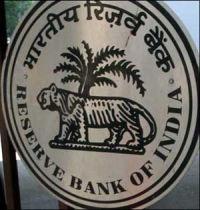 W
With interest rates likely to go up in the future, staying with liquid or liquid-plus funds will mean better returns and flexibility.
Today, when the Reserve Bank of India raised key rates - repo and reverse repo - by 25 basis points, debt fund investors would have wondered if this was the time to get locked into medium or long-term schemes. The answer, however, is still no.
Financial experts feel with inflation still not under control, the apex bank could raise rates in the future.
Amandeep Chopra, head, fixed income, UTI AMC, said: "It is advisable to go for liquid and liquid-plus or ultra short-term schemes because more rate rise is likely in the future."
Staying short will also mean provide flexibility, in terms of moving money from one kind of scheme to another, if there is a change in the interest rate cycle. Also, short-term debt funds will give better returns because the constant churn that fund managers have to do.
According to Value Research, a mutual fund research agency, ultra short and liquid debt funds have returned 6.09 per cent and 6.02 per cent annually.
While gilt, medium and long-term debt funds gave 5.63 per cent. This clearly indicates that short-term funds were able to stay ahead from longer-term funds, in terms of returns.
However, there is a word of caution. If one were to move their money too much in one year, there would be a tax on short-term capital gains. The capital gains will be added to your income and taxed, according to the income tax slab.
Another reason why fund managers are advising against locking-in money in medium or long-term debt schemes is because of the inability to take advantage of any rise in the rates in the future.
Also, rise in yields will impact returns of long-term funds adversely because of the inverse relationship with price of bonds .
Mahendra Jajoo, executive director and chief investment officer, fixed income at Pramerica Mutual Fund feels by June, when early indications are available for monsoon, a clear trend on long-term rates will emerge.
However, if you want to lock-in money in existing rates, look at fixed maturity plans.
FMPs are offering 9.9 per cent to 10 per cent for a one-year term. And despite being riskier than other debt schemes because of their exposure to corporate paper, these schemes get double indexation benefits for tenures that are slightly more than one year.
Say, if one invests in an FMP in March 2011 which is maturing in say, May 2012, there will inflation indexation benefits for years 2010-11 and 2012-13. This would mean higher post-tax returns for the investor.


 With interest rates likely to go up in the future, staying with liquid or liquid-plus funds will mean better returns and flexibility.
With interest rates likely to go up in the future, staying with liquid or liquid-plus funds will mean better returns and flexibility.